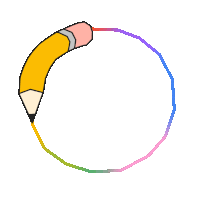
May 19, 2020
Nicholas Winton's 111th Birthday
Today’s Doodle celebrates the 111th birthday of British humanitarian Sir Nicholas Winton, who organized the escape of over 600 children from German-occupied Czechoslovakia in the lead-up to World War II.
Nicholas Winton was born Nicholas George Wertheim in London, England on this day in 1909. In 1938, with World War II looming over Europe, Winton was inspired to do something to help.
He set in motion a huge rescue effort to save primarily Jewish children from the threat of German occupation in present-day Czechia by transporting them to Britain. The dangerous operation required Winton and his collaborators to find homes for the children with British families, raise money, bribe officials, and even forge documents. In March 1939, the first train left Prague, and over the next few months, a total of 669 children were rescued to safety.
For nearly 50 years, the world knew nothing of what Winton had done – not even his wife. That all changed in 1988, when she discovered documents in their attic referencing the daring rescues. Today, Winton’s story serves as an shining example of the power of selfless action to bring about incredible change.
Special thanks to Nicholas Winton’s Family. Below, they share the story of Winton’s life:
Photograph courtesy of Matej Minac
“Don’t be content in your life just to do no wrong, be prepared every day to try and do some good.“ –Nicholas Winton
Sir Nicholas George Winton is primarily known for organising the rescue of endangered children from German-occupied Czechoslovakia in 1939. He was born on this day in London in 1909 to Rudolf and Barbara Wertheim, both from German-Jewish families. The family name was changed to Winton in 1938. He followed his father into banking, and in the late 1930s, he worked at the London Stock Exchange.
In December 1938, he was called to Prague by a friend, Martin Blake, who was there helping refugees of the German occupation, including politicians, intellectuals, Jews, and Roma. This effort, spearheaded by Doreen Warriner, was to evacuate to safety those who had fled from the borderlands (called Sudetenland) of Czechoslovakia when German forces had occupied the region after the Munich Agreement in September 1939.
While in Prague, Nicholas witnessed the suffering of the Sudeten and German refugees who were living in atrocious conditions in camps set up around Prague. He decided he had to help and drew up a plan, with the encouragement of Doreen Warriner, to try and bring endangered children, most of whom were Jewish, to safety in Britain.
The British government had agreed in November 1938 to allow Jewish children from Germany and Austria into the UK on a Kindertransport, but Czechoslovakia had not been included in that scheme. Nicholas obtained Government permission to bring Czechoslovak children to safety on condition he found a foster family and a repatriation bond of £50 (approximately $3,000 today) for each child. With the help of Trevor Chadwick, an English schoolteacher, and other volunteers, he organised eight transports bringing 669 children to the UK through the spring and summer of 1939.
A large transport of 250 children, due to leave Prague on September 1st, was cancelled when Germany invaded Poland that day and closed all borders. Two days later, war was declared.
In 1988, the story became public via a TV programme, “That’s Life!”, where Nicholas was reunited with some of those children, now in their 60s, who had not known till then how they had come to be saved. From then on, until his death in 2015 aged 106, he met hundreds of ‘his’ children, along with their own children and grandchildren. Many became close friends.
In 2003, he was knighted by Queen Elizabeth II for Services to Humanity. However, he always protested that he only did what anyone would have done had they witnessed the conditions in those refugee camps in 1939. He continued all his life to do charity work to help others and believed it was the most satisfying and meaningful way for anyone to spend their time.
Nicholas Winton’s primary legacy is the 669 children rescued and their descendants: approximately 7000 people who are alive today because of that Kindertransport. However, his story is also about individuals taking action when a need is seen, and his family believes his legacy is also one of inspiration.
Nicholas believed that talking about history was only useful if it had a positive influence on how people acted today. We hope that people will be inspired by his story to take action themselves today to help others – in their own communities or internationally.
–Barbara Winton (daughter), on behalf of the Winton Family
Nicholas in Red Cross 1940
Photograph courtesy of Barbara Winton
Nicholas in Paris in 2005
Photograph courtesy of Barbara Winton
Photograph courtesy of Matej Minac
Photograph courtesy of Matej Minac
Where this Doodle appeared
Discover more Doodles by color
Did you know?
The very first Doodle launched as an “out of office” message of sorts when company founders Larry and Sergey went on vacation.
Learn MoreDid you know?
The first Doodle launched in 1998, before Google was officially incorporated.
Learn MoreDid you know?
The first same day Doodle was created in 2009 when water was discovered on the moon.
Learn MoreDid you know?
Doodle for Google student contest winners have gone on to become professional artists
Learn MoreDid you know?
The time it takes from sketch to launch for a Doodle varies widely: some have taken years and others just a few hours!
Learn MoreDid you know?
Hundreds of Doodles launch around the world every year. Often, several different ones are live in different places at the same time!
Learn MoreDid you know?
Our most frequently recurring Doodle character is Momo the Cat - named after a real-life team pet!
Learn More